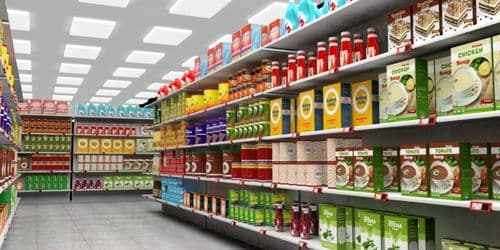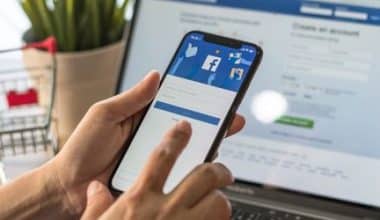Retail merchandising may make or break your store’s business. When done well, visual merchandising may direct customers to the right products, entice them to buy, and provide a positive in-store experience. However, if you do it incorrectly, you will drive people away.
We’ve compiled some expert-backed retail merchandising techniques and insights to help you retain people in your store (and convert them into paying customers). Examine the tips below and consider how you may use them in your retail store.
What is Retail Merchandising?
Retail merchandising is the arrangement of items in an appealing manner in order to engage and motivate customers who visit a physical retail store to purchase more products than they anticipated.
Many retailers would struggle to answer the question, “What is retail merchandising?” Retail merchandising encompasses everything from how you aesthetically organize your inventory to traffic patterns in your store, how you display items to drive add-on purchases, signage, and the value of the fitting room for clothes merchants.
Visual merchandisers also examine all of the behind-the-scenes data that demonstrates what works and what doesn’t. This post is intended to serve as a tactical tutorial for merchants seeking visual merchandising methods and product merchandising ideas.
What is the Importance of Retail Merchandising?
The marketing strategy of a store should include retail merchandising. The following are some ways that effective retail merchandising can help:
- Increased overall sales: Effective retail merchandising encourages customers to purchase things. This may result in increased sales. A beverage display, for example, could be added near the check-out part of a business. Customers who are waiting in line may buy more things while they wait.
- Improved consumer satisfaction: A visually appealing store is created by successful retail merchandising. Customers can simply find the things they want, which can lead to increased levels of customer satisfaction.
- Increased customer involvement can result from retail merchandising. Customers, for example, tend to spend more time in aesthetically beautiful stores, and they may share their experiences with their friends and family members online.
- More customers: Retail merchandising has the potential to attract new clients. New clients are more likely to enter a store if they notice aesthetically appealing window displays. S
- Inventory turnover is more efficient: Customers can find things more easily when a store employs excellent retail merchandising. When shelves are well-stocked and products are easily accessible, inventory turnover can be accelerated. This means that the things acquired by the store sell more quickly.
What Should an In-store Merchandising Strategy Have?
Consider the ideal layout to guide customers around your store and to the products you wish to sell when developing your retail merchandising plan. You can choose a grid, loop, circular, or free-form arrangement depending on the size of your space.
Here are a few things to think about while developing a merchandising strategy:
- Select the products that you want to promote. Most of the time, you’ll want to focus on your newest items, best-sellers, and core products with a greater profit margin—you can utilize the break-even point method to better understand profit margins linked with your products. Change the products you market from month to month—or even week to week—based on the merchandise you want buyers to notice.
- Determine the layout of the store and how traffic will flow. The shopping experience is influenced by the layout or planogram of your store. Customers who don’t mind bargain hunting will flock to a retail store crammed with items on packed racks and disorderly shelves. A well-organized, basic store, on the other hand, does a better job of emphasizing certain products and their worth. You could go somewhere in the middle to present a plentiful but not overwhelming product assortment.
- Make an in-store display budget. Once you’ve decided on a layout for your store, you’ll need product displays, signage, lighting, fixtures, and other accessories to highlight your merchandise. Set a budget so that you have enough money to buy products and spend on promotions to entice customers into your store.
- Consider the seasons, holidays, and unique events. Displaying Christmas clothing in the midst of July will confuse customers. Prepare your retail merchandising strategy ahead of time to capitalize on seasonal, holiday, and other special event displays.
- Consider how long it takes to get products on the floor. The time it takes to merchandise a store is determined by factors such as how many SKUs you have, whether displays have unique requirements (such as security), how readily fixtures can be moved, and the size of your window displays.
Read Also: Is Amazon Retail Arbitrage Still Profitable? Detailed Guide
A merchandising strategy is essential for optimizing retail merchandising, eliminating out-of-stock occurrences, minimizing the need to mark down inventory, and enhancing margins, in addition to arranging your in-store retail merchandising displays.
An open-to-buy strategy (OTB) can also be used to better manage retail inventory. An OTB plan is a budget for real-time inventory spending that ensures you have the money to buy more inventory at any time.
Retail Merchandising Components
Visual merchandising is an important component of retail merchandising, and cross-merchandising in retail helps to boost consumer loyalty and sales. Product displays are another aspect of an in-store retail merchandising strategy.
Here’s a rundown of the elements to think about once you’ve decided on a store layout:
#1. Interior decoration
Decor and retail design help shoppers relate to your business by creating an immersive experience. It also helps with product promotion. If you offer pajamas, for example, set up an area in your store with a sofa, throw blanket, and rug to give clients the impression of being at home (in their pajamas).
#2. Lighting
Lighting allows customers to concentrate on specific items and major product displays. You can highlight new products or things you want to relocate.
Aside from targeted lighting, ornamental in-store lighting can help set the mood. Setting a modest low-light lamp on a table close to the sofa, for example, offers a soothing mood in the scenario described above.
#3. Signage
Signage attracts customers and directs them through the store. Signs can be used to show product categories, and pricing, or to emphasize a sale.
Directional signage for the fitting room or the cashier makes the trying and purchasing process smoother and faster. Signs are also an excellent approach to conveying the advantages of products.
#4. Fixtures
The right fixture combination can suit your area and store layout. Determine whether your products should be hung on racks, folded, or placed on shelves.
Display delicate or pricey items in glass cases, and arrange items on display tables that customers may want to interact with before purchasing.
Retail Merchandising Best Practices
Consider the following best practices when developing a retail merchandising plan:
#1. Layouts should be properly planned.
Customers’ retail experiences are greatly influenced by the store layout. Some large retail chains design a unique layout for each of their franchises. Consider how you want clients to move among the merchandise while building your own business layout. Make the store visually appealing and well-lit so that clients can move around freely.
#2. Investigate the requirements of your clients.
Having the things that people want in your store is a crucial aspect of merchandising. Consider conducting market and target audience research to discover more about the products they desire. This might assist you in purchasing and selecting the appropriate things. Analyzing the needs of your clients can also assist you in planning your store layout and product groupings.
#3. Keep your store tidy and well-stocked.
Maintaining a tidy retail establishment can assist attract customers and improve their shopping experience. To keep consumers satisfied, several establishments utilize a shelf-stocking system and a cleaning routine. Employees may, for example, clean the floor, stock the shelves, and ensure the site is ready for the next day after the store closes.
#4. Products are purposely grouped together.
Grouping is an important aspect of retail merchandising. Grouping refers to where and how things are arranged in a store. Try to group things in a way that makes them easy to find for customers. Some businesses, for example, keep all home things in one section and apparel in another. Customers will have an easier time finding what they’re seeking, which will improve their experience.
When grouping products, you can also employ cross-merchandising tactics. This entails categorizing goods depending on their intended use. Salad dressing, for example, might be kept in the same department as vegetables at a grocery shop. This grouping method can help shoppers remember to buy similar things.
#5. Maintain objects that are easily accessible and visible.
Consider how customers may perceive things while designing product placements. Keep everything at eye level. This can assist enhance sales because shoppers will be able to view and reach more things. To improve sales, place the most popular products at eye level if you have tall shelves.
#6. Provide regular updates
It is critical to maintaining retail merchandising strategies up to date. Customers frequently prefer variety and may require new things over time. In a clothes store, for example, you can change the products based on seasonal needs. Cold-weather merchandise may be purchased and displayed in select locations at the start of winter. In the summer, you can provide attire appropriate for the weather.
#7. Display advertisements
Promotions and sales can entice buyers to purchase specific things. If your store is running a promotion, make sure to prominently show this information. For instance, if your store is having a deal on specific food items, you can place a sticker or sign in that department. You can boost the odds of the buyer purchasing the item by emphasizing the deal and making the specifics apparent.
Tips For Retail Merchandising
Consider the following common guidelines when merchandising retail products:
- Request feedback from customers: Client surveys are an excellent approach to discovering more about customer preferences. Customers may be asked if there is anything else they would like to see in the store. Customers might also be asked to rate the store in several categories, such as cleanliness. This might assist you in making changes to improve your retail merchandising techniques.
- Consider using samples or demonstrations: Depending on the things you sell, you may wish to give free samples or product demonstrations. To entice customers, a grocery store, for example, can provide sampling samples of a new product. A demonstration table may be set up at an electronics store so that customers can try out products.
- Consider all of your senses: Try to incorporate many senses, such as sight, scent, and sound, when building an enticing storefront. To entice customers, several establishments use signature smells or play music.
- Keep track of each strategy: Consider tracking each retail merchandising strategy to evaluate how effective it is. This can assist you in developing future merchandising strategies.
Should I Employ a Merchandiser or Do It Myself for My Store?
The answer to this question is entirely dependent on your financial situation. Outsourcing retail merchandising to a merchandising professional or organization might relieve you of dealing with this critical aspect of a retail operation.
Retail merchandising services have experience and are suppliers for product displays and other in-store fixtures. They can also assist you in implementing a solid retail merchandising plan that yields a high ROI and is well worth the investment.
But it’s fine if you’re not yet ready to outsource this duty. The benefits of doing it yourself include cost savings and learning the ins and outs of retail merchandising. When the time comes to recruit someone, you’ll have experience and business background to guide anybody you hire to handle your merchandising.
Conclusion
Undoubtedly, the recent pandemic has expedited the shift to online buying. Consumers, on the other hand, are still lured to physical stores. Retailers must consider omnichannel, providing top-tier digital experiences and communication with tools such as the best quality business VoIP system, while also focusing on improving the consumer experience in retail stores.
Even for companies with decades of expertise, changing circumstances necessitate a rethinking of methods. Fortunately, there are numerous options to improve foot traffic and keep customers in-store.
When it comes to retail, time is important. Retailers in all industries, from grocery stores to clothing chains, must consider how to promote retail sales when customers are in-store by implementing best practices in retail merchandising right now.
Related Articles
- Best eCommerce Platform: Top 15 eCommerce platforms UK
- Retail Customer Experience: Definition & All You Need To Know
- OMNICHANNEL MARKETING: Definition, Tips, & Examples
- BLACK FRIDAY STORE HOURS IN 2023: How Long Will It Last






